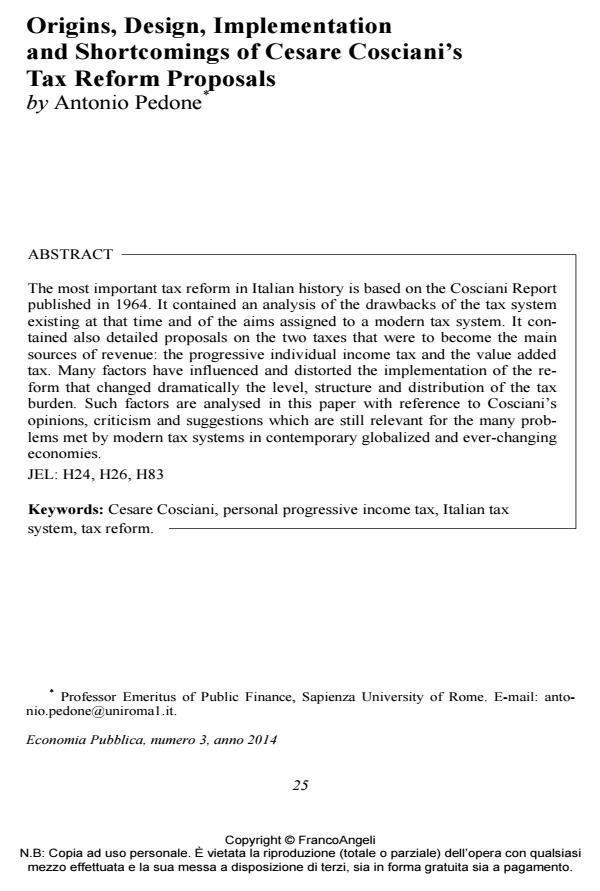Origins, Design, Implementation and Shortcomings of Cesare Cosciani’s Tax Reform Proposals
Journal title ECONOMIA PUBBLICA
Author/s Antonio Pedone
Publishing Year 2015 Issue 2014/3
Language English Pages 14 P. 25-38 File size 168 KB
DOI 10.3280/EP2014-003002
DOI is like a bar code for intellectual property: to have more infomation
click here
Below, you can see the article first page
If you want to buy this article in PDF format, you can do it, following the instructions to buy download credits

FrancoAngeli is member of Publishers International Linking Association, Inc (PILA), a not-for-profit association which run the CrossRef service enabling links to and from online scholarly content.
The most important tax reform in Italian history is based on the Cosciani Report published in 1964. It contained an analysis of the drawbacks of the tax system existing at that time and of the aims assigned to a modern tax system. It contained also detailed proposals on the two taxes that were to become the main sources of revenue: the progressive individual income tax and the value added tax. Many factors have influenced and distorted the implementation of the reform that changed dramatically the level, structure and distribution of the tax burden. Such factors are analysed in this paper with reference to Cosciani’s opinions, criticism and suggestions which are still relevant for the many problems met by modern tax systems in contemporary globalized and ever-changing economies.
Keywords: Cesare Cosciani, personal progressive income tax, Italian tax system, tax reform.
Jel codes: H24, H26, H83
Antonio Pedone, Origins, Design, Implementation and Shortcomings of Cesare Cosciani’s Tax Reform Proposals in "ECONOMIA PUBBLICA " 3/2014, pp 25-38, DOI: 10.3280/EP2014-003002